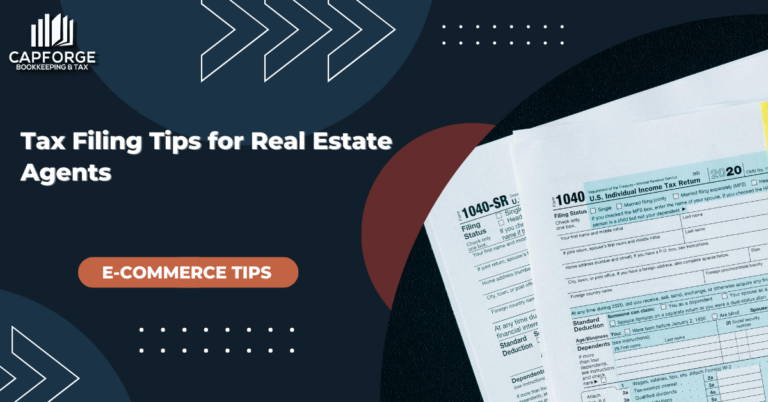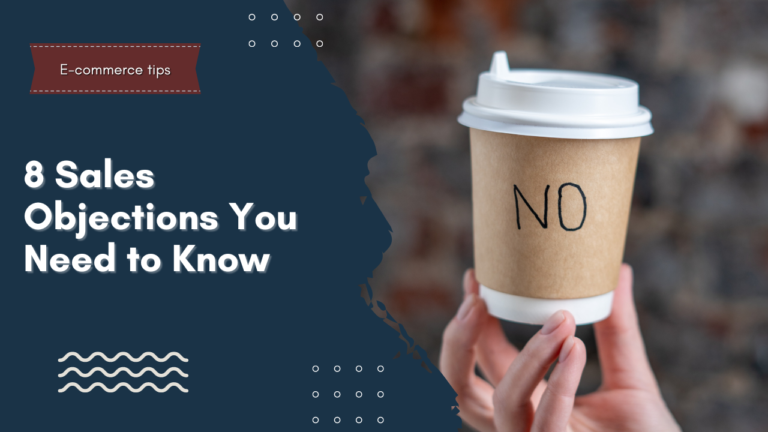Can e-Commerce Businesses Go and Grow, Even in a Though Economy?
This is a guest post from Riverbend Consulting.
Interest rates hit their highest level in 22 years this past week. Inflation, and the economy in general, is swirling with uncertainty.
What are e-commerce businesses and Amazon sellers to do? While your individual business can’t singlehandedly boost the gross domestic product (GDP) or decrease the Federal Funds Rates, there are ways to weather the storms. For e-commerce businesses, even small steps will help you fight inflation and today’s financial realities.
Here are six ways to navigate today’s economic turbulence – and keep your money working for you.
Control your costs, including Amazon fees
Getting a handle on “money in, money out” is standard operating procedure, but take another dive to shave away those things that can wait. For Amazon FBA sellers, the BIG STEP is to examine Amazon fees. They quickly spiral out of control and are one of the biggest impacts on your bottom line. Take the time to conduct an ASIN-by-ASIN audit of Amazon fees. You’ll be shocked! It’s likely you’re being overcharged – or improperly reimbursed – for lost and damaged inventory in their fulfillment centers (FCs).
- Examine product dimensions. We’ve seen sellers whose products were placed in a larger size classification than they should have been and were being charged an extreme fee for every single order. Start by getting the dimensions and weight corrected on Seller Central. Step two is to file a case asking for reimbursement of all past inappropriate charges.
- Confirm storage fees. These fees may be wrongly inflated by Amazon if a product is assumed to be larger than it really is. If storage fees are too high, the seller is usually to blame. It’s imperative to know what’s in storage, recall slow-moving inventory and avoid over-stocking unproven items.
Amazon owes you money, get it back
Amazon loses, damages and otherwise fails to properly care for Fulfilled By Amazon (FBA) inventory that belongs to third-party sellers. This is a normal part of any fulfillment business. Occasionally, Amazon sellers see automatic reimbursements in their accounts for lost and damaged inventory. Unfortunately, for most sellers, these automatic reimbursements make up less than 20 percent of the reimbursements they are actually owed by Amazon.
Getting paid back for mistreated and misplaced inventory isn’t easy. It requires serious accounting mojo, in addition to manual filing of Seller Support cases. Fortunately, there are service providers (including Riverbend Consulting) that can help. And in most cases, sellers do not pay unless the service provider recovers funds from Amazon. A small percentage, or finder’s fee, then applies.
If a seller has never performed an account audit, they may be in for a nice surprise. Cases can be filed going back as far as 18 months, depending on the reimbursement type. Learn more and consider signing up for reimbursement services.
Avoid “stuck inventory” and keep selling
Every Amazon seller must avoid stranded inventory…it’s the bane of every seller’s existence. “Stranded” is when a product is stored at an Amazon FC, but the listing is missing, incomplete, or inactive. Amazon is happy to keep it, store it and charge you for it, whether it’s active or not. Unfortunately, getting inventory from “stranded” to “active” is difficult, time-consuming and frustrating. It’s worth it! Stranded inventory means your cash is tied up – rather than making sales and using the proceeds to buy more inventory or rake in profits. Whether you use an in-house employee, a VA, or an Amazon service agency, it’s critical to get that inventory back to active. But how?
- In some instances, a few clicks in Seller Central will solve the problem for a well-trained employee
- In other cases, a case with Seller Support must be opened, monitored and followed up multiple times
- Finally, sometimes, written appeals are needed to address product quality issues or policy violations
No matter who tackles the issues, stranded inventory cannot be allowed to linger. It’s far too expensive – even if this expense seems hidden. For an outsourced option, have a chat with the Riverbend Consulting team.
Consider outsourcing for low-cost options
Amazon sellers are big believers in virtual assistants (VAs). With onshore and in-house labor costs continuing to rise, now is the time for sellers to evaluate their companies’ daily activities and find options for outsourcing. Examples include:
- Answering customer service messages
- Fixing stranded inventory
- Managing account health and writing ASIN appeals
- Seeking out and sourcing inventory
- Performing any other task for which a Standard Operating Procedure (SOP) can be developed
By outsourcing, sellers can avoid human resources expenses, from hiring to onboarding to benefits and more. Plus, they can ensure continuity by relying on a full-featured firm with an entire team of employees to service their account. One word of caution for sellers: VAs must be well versed in the world of Amazon. There’s not a lot that is much worse than hiring a VA that gets your account suspended by Amazon. It happens frequently because the VA may be working on multiple seller accounts which results in a linked accounts suspension. Hire smartly. If you think outsourcing is for you, consider our VAs. They are Amazon-savvy professionals.
Maximize your existing listings
Improve the quality of your listings. Rather than rushing to source new products or reinvent the wheel, sellers are well-served to maximize the ASINs they know should be selling more – but simply aren’t.
Dollar for dollar, money spent on listing optimization creates higher return on investment than almost any other activity on Amazon. Why? Because real improvements to the listing detail page can improve search results on the A9 algorithm, increase views and drive more conversions. An optimized ASIN detail page can even work in concert with PPC campaigns to lower the average cost of sales (ACOS ). There is no shortage of listings optimization providers, including yours truly. In our experience, it costs less to use a high-quality vendor that knows how to master listings with better quality images, lifestyle images, improved keywords, Enhanced Brand Content (also known as A+ Content) and more.
Wake up to your worst ASIN – and deal with it
One seller may have two or three products while others have thousands or hundreds of thousands of SKUs. Regardless, these sellers have something in common: they have one worst ASIN. Take away that worst ASIN, and they will still have one worst ASIN.
“Bad” ASINs cause a multitude of problems, from poor reviews to high return rates to safety concerns and more. Add these problems together and, suddenly, the ASIN is a money loser.
It doesn’t have to be that way. You and every seller can improve that worst-performing ASIN. Here’s how:
- Identify which ASIN is losing the most money, generating the most returns or generally causing expensive headaches
- Rehab that ASIN with a clear product detail page, a better description, improved packaging, or some other fix based on Voice of the Customer, reviews, returns, feedback and common sense
- If the ASIN cannot be affordably rehabbed, scrap it; don’t sell dogs
- Repeat with the new worst-performing ASIN
We suggest creating written Standard Operating Procedures (SOPs) to cover most of this process, which then can be handled largely by a VA or outsource. Of course, final decisions, manufacturing issues, safety problems and the like still need management intervention.
As a small business ourselves, we understand the fiscal realities of a tough economy. Whether you’re an Amazon seller or other type of e-commerce business, it is possible to go and grow. Start with the small steps to drive profitability and success.
AUTHOR
Lesley Hensell is co-founder and co-owner of Riverbend Consulting, where she oversees the firm’s client services team. She has personally helped hundreds of third-party sellers get their accounts and ASINs back up and running. Lesley leverages two decades as a small business consultant to advise clients on profitability and operational performance. She has been an Amazon seller for almost a decade, thanks to her boys (21 and 15) who do most of the heavy lifting.








